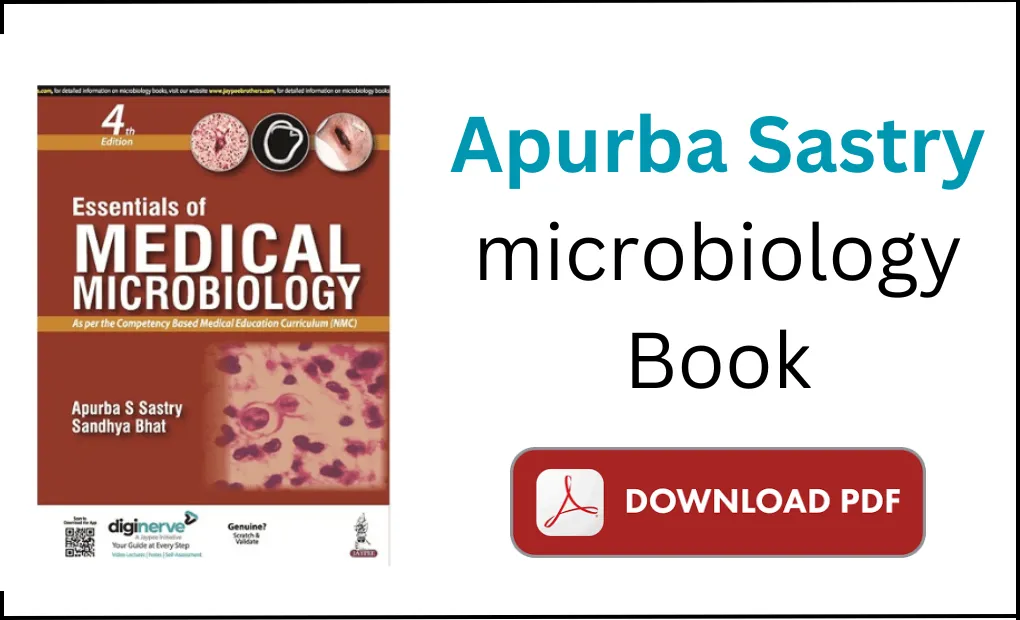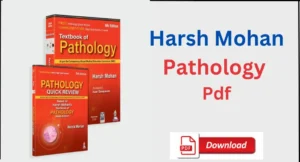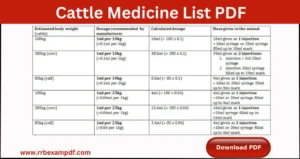Apurba Sastry Microbiology Pdf: Latest Edition of Apurba Sastry Microbiology book pdf download, microbiology Apurba Sastry 3rd edition pdf download, Apurba Sastry microbiology pdf 4th edition pdf, Apurba Sastry microbiology price, Apurba Sastry microbiology ppt download.

Contents in Apurba Sastry Microbiology Pdf
Section 1: General Microbiology
- Introduction and Bacterial Taxonomy
- Morphology and Physiology of Bacteria
- Sterilization and Disinfection
- Culture Media and Culture Methods
- Identification of Bacteria
- Bacterial Genetics
- Antimicrobial Agents, Antimicrobial Resistance, and Antimicrobial Susceptibility Testing
- Microbial Pathogenicity
Section 2: Immunology
- Immunity (Innate and Acquired)
- Antigen
- Antibody
- Antigen-Antibody Reaction
- Complement
- Structure of the Immune System
- Immune Responses: Cell-mediated and Antibody-mediated
- Hypersensitivity
- Autoimmunity
- Immunodeficiency Disorders
- Transplant and Cancer Immunology
- lmmunoprophylaxis and Immunohematology
Sec. 3: Systematic Bacteriology
Gram-positive cocci
- Staphylococcus
- Streptococcus, Enterococcus, and Pneumococcus
Gram-negative cocci
- Neisseria and Moraxella
Gram-positive bacilli
- Corynebacterium
- Bacillus
- Anaerobes (Oostridium and Non·sporing Anaerobes)
- Mycobacteria
- Miscellaneous Gram-positive Bacilli
Gram-negative bacilli
- Enterobacteriaceae-1
- Enterobacteriaceae-11 : Salmonella
- Vibrio and Aeromonas
- Pseudomonas and other Non-fermenters
- Haemophilus and HACEK Group
- Bordetella
- Brucella
- Miscellaneous Gram-negative BaciIii
Other groups of bacteria
- Spirochetes
- Rickettsiae, Coxiella, Bartone/la
- Chlamydiae
- Mycoplasma and Ureaplasma
Section 4: Virology
- General Properties of Viruses
DNA Viruses
- Herpes viruses
- Other DNA Viruses
RNA Viruses
- Myxoviruses and Rubella Virus
- Picornavi ruses
- Arboviruses
- Rhabdoviruses
- HIV and Other Retroviruses
- Miscellaneous RNA Viruses
Other groups of viruses
- Hepatitis Viruses
- Oncogenic Viruses
Section 5: Mycology
- Medical Mycology
Section 6: Applied Microbiology
- Normal Microbial Flora of the Human Body
- Clinical Microbiology (Infective Syndromes)
- Hospital Acquired Infections
- Biomedical Waste Management
- Bacteriology of Water, Milk, Air and Food
Annexures
- Emerging and R-merging Infections
- Bioterrorism
- Laboratory Acquired Infections
- Zoonosis
Book Details
| Book Name | Essentials of Medical Microbiology |
| Author Name | Apurba S Sastry |
| Publisher | Jaypee Brothers Medical Publishers |
| Pdf Size | 145 MB |
| Total Pages | 656 |
Download the PDF of Apurba Sastry Microbiology
To download the pdf of this book, you can download the pdf by the link given below or you can purchase it online from Amazon.
Disclaimer: We have neither copied nor scanned this book, we are only sharing the links already available on the internet for the purpose of education. If any person/organization has any objection related to these notes/books, please contact us, and we will remove these links as soon as possible. Email – rrbexampdf@gmail.com



